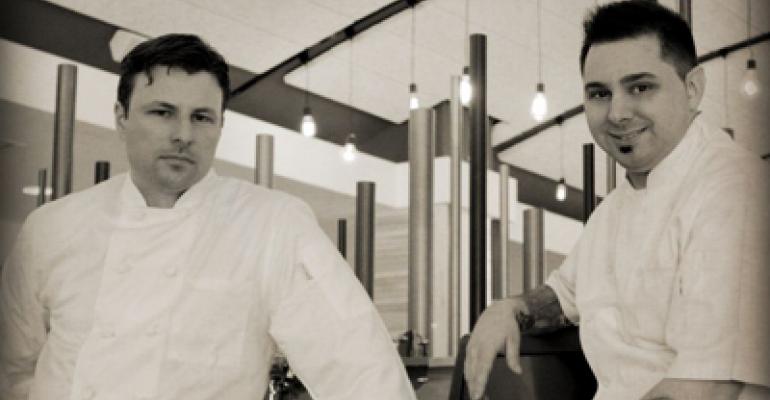Billed as a tool for easier and more enjoyable wine ordering, the wine list of Moderno, a new Italian restaurant in the Chicago suburb of Highland Park, Ill., presents each of its 130 wines with a succinct stat line that rates it for six flavor characteristics and five levels of intensity.
The characteristics are strength of wine; fruit, aroma and flavor; acid level; alcohol; wood; and sugar level. The intensity levels are low, medium-minus, medium, medium-plus and high.
RELATED
• Brands build identity with new alcoholic drinks
• Creating bourbon sommeliers
• More food and beverage news
For example, a chardonnay from Monterey, Calif., is described as medium-plus body, toasty wood, brioche, crème brulee, medium-plus acid, medium-plus alcohol, medium-minus wood and dry. An Italian Barolo is billed as medium-plus body, sweet spice, raspberry, herbs, medium acid, medium-plus alcohol, medium-plus wood and medium-plus tannin.
It might sound like a lot of information for a customer to digest, but the results have been positive.
“Our customers have responded really well to it,” said chef-proprietor John des Rosiers, the architect of the list. “It’s a way to communicate all of the important things that are in the wine in a way that’s fast and easy so anyone can know what’s in the bottle. It also helps our servers suggest wines quickly and easily.”
In fact, des Rosiers said that Moderno patrons are making better use of these terse nuggets than the lengthier, anecdote-filled wine notes he penned for the list of Inovasi, his restaurant in nearby Lake Bluff, Ill.
“When we first opened Inovasi, we had five or six lines of information about each wine, including little stories about the winemakers,” said des Rosiers. “But we found that people just wouldn’t read the entire thing.”
The fact that all of the wines are tasted and annotated in consistent fashion also makes it easier for management to analyze the list and fill gaps in selection, des Rosiers added.
Like the Moderno menu, which pays homage to traditional Italian dishes but adds an occasional cross-cultural tweak for creative effect, like housemade pancetta with a hint of Chinese five spice powder, the wine program also deviates from the Italian restaurant norm. It is studded with bottles from small producers in places like Spain, France, California, Argentina and Washington State, as well as Italy. They're selected by des Rosiers, who is a certified sommelier and former restaurant wine director, as well as a chef.
“There are a lot of labels that most consumers are not going to recognize — certainly people who are used to eating and drinking on the North Shore,” said des Rosiers. “So our servers often ask guests what they like to drink. For instance, if you like California Syrah, you will want something with medium-plus body from a warm region with low acid and not a lot of tannin. Or if they like French Pinot Noir, there are a lot of things from northern Italy they can have."
Streamlining the wine ordering process is also making for a more sociable dining experience.
“If people spend half an hour reading a wine list when they sit down, that’s time taken away from talking with their friends,” des Rosiers said.




